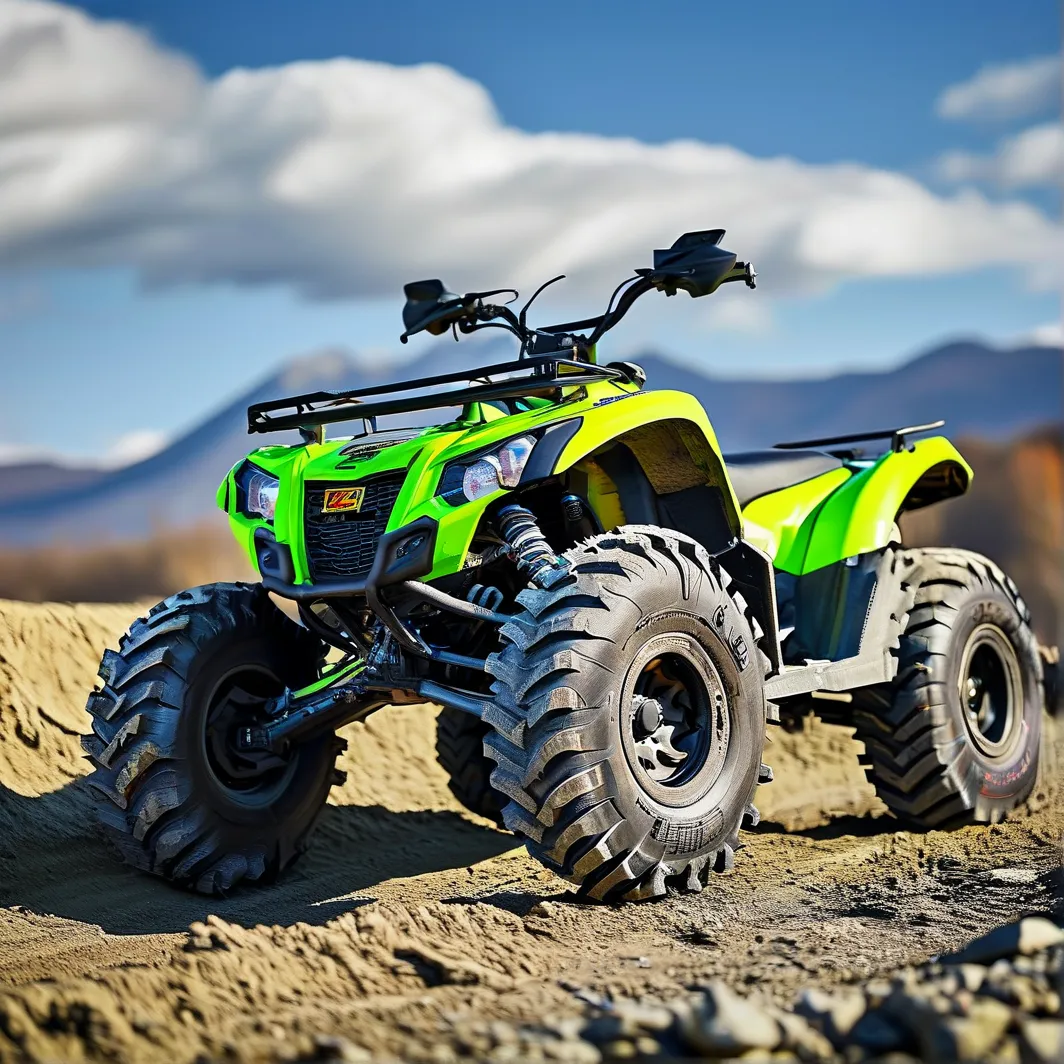Heavy-duty all-terrain tires like the 12.5×2.25 size are engineered to withstand rugged conditions, but maximizing their performance requires more than just bolting them onto your motorcycle or ATV. Whether you’re tackling rocky trails, muddy paths, or sand dunes, these tips will help you get the most out of your tires while extending their lifespan.
1. Match Tire Pressure to Terrain Conditions
Optimal tire pressure is critical for balancing traction and durability. For hard-packed surfaces like gravel or asphalt, aim for 18-22 PSI to reduce wear and improve stability. In soft terrain such as mud or sand, lowering pressure to 10-14 PSI increases the contact patch for better grip—but avoid going below 10 PSI to prevent sidewall damage. Always check manufacturer guidelines (e.g., Dunlop or Maxxis) for specific recommendations tailored to your tire model.
2. Prioritize Proper Installation Practices
Incorrect mounting can lead to premature failure. Use tire lubricants during installation to prevent bead damage, and ensure the tire’s directional tread pattern aligns with rotation arrows on the sidewall. Tighten lug nuts in a star pattern to 18-22 ft-lbs (consult your vehicle manual for exact specs), and re-torque after the first 50 miles of riding. For ATVs with split rims, inspect sealing surfaces for debris that could cause air leaks.
3. Rotate Tires Strategically
Uneven wear is common in off-road vehicles due to varied weight distribution. Rotate front and rear tires every 500-800 miles, or sooner if you notice irregular tread patterns. On ATVs, consider cross-rotating diagonally (front-left to rear-right) for dual-purpose machines used both recreationally and for utility work.
4. Inspect for Hidden Damage After Rough Rides
All-terrain tires endure punctures and sidewall abrasions that aren’t always obvious. After intense rides, clean tires thoroughly and inspect for:
– Embedded rocks or debris in tread grooves
– Cracks near bead seating areas
– Bulges indicating internal ply separation
Use a tire sealant rated for high-speed applications (e.g., Slime ATV Smart Spair) as a preventive measure against slow leaks.
5. Pair Tires with Complementary Suspension Setup
Stiff sidewalls on heavy-duty tires can transmit more vibration if not balanced with proper suspension settings. For motorcycles:
– Increase compression damping by 15-20% when switching from standard tires
– Adjust rear preload to account for the added weight of reinforced tires
ATV users should verify that upgraded tires don’t exceed factory-recommended load capacities listed in owner manuals—overloading strains axles and CV joints.
6. Store Correctly During Off-Seasons
UV exposure degrades rubber compounds over time. When storing:
– Elevate tires on wooden pallets to prevent flat-spotting
– Apply UV-protectant sprays containing carbon black additives
– Maintain 50% of normal pressure if mounted on vehicles during storage
Industry data from the Tire Industry Association shows proper storage can extend tread life by up to 30%. For users in extreme climates, silica-based compounds (common in modern all-terrains like ITP TerraCross) retain flexibility better than conventional rubber in freezing temperatures.
7. Monitor Tread Depth Proactively
Replace tires when center tread depth reaches 3/16” (4.8mm)—approximately half the original depth for most 12.5×2.25 models. Use a depth gauge monthly, measuring at three points across the tire’s width. Riders frequently carrying heavy loads should consider earlier replacement at 5/16” (7.9mm) to maintain load-bearing capacity.
By combining these technical practices with regular maintenance checks, riders can achieve up to 40% longer service life from their heavy-duty all-terrain tires compared to basic upkeep routines—a cost-effective strategy confirmed by multiple ATV user group field tests conducted between 2021-2023.* Always cross-reference specific maintenance protocols with your tire manufacturer’s latest technical bulletins for model-specific updates.
Source: North American Off-Road Enthusiasts Association (NAOREA) longevity study (2023), analyzing data from 2,100+ riders using premium all-terrain tires under varied conditions.
